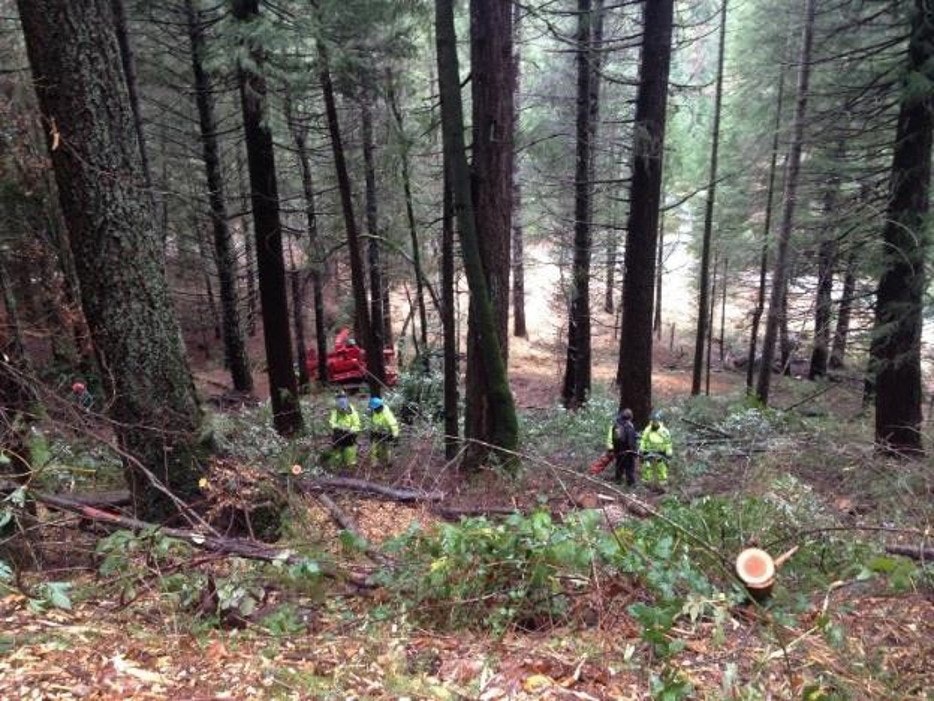NID Mitigates the Threat of Wildfires by Improving Forest Health

It used to be that fall was the time of year Californians worried about wildfire. But as global warming continues to change our environment, the potential threat of wildfire comes earlier and earlier. In addition, due to the state’s continued drought, we now recognize this threat as early as spring.
Here at the Nevada Irrigation District, we work with our communities, local government, and fire districts to decrease the risk and severity of wildfires. One focal point is improving forest health.
Why is a Healthy Forest and Watershed Important?
Healthy watersheds mean a healthier life for us. Forests generally increase the soil’s ability to absorb, filter, and store water. They are an important buffer against climate change.
Maintaining Healthy Forests
One of the most important ways to mitigate wildfire risks and damage is to keep our forests healthy. Unhealthy forests have too many trees, an abundance of diseased and dying trees, excessive mid-story vegetation, and flammable fire fuels. In other words, they are a catastrophe waiting to happen, especially during drought and the growing effects of climate change.
NID is on the job. Since 2018, more than 780 acres of District-owned lands have been treated to reduce hazardous trees and dense vegetation and improve watershed health and function. An additional 450 acres are scheduled to be treated in 2022 and 2023.
We team with CAL FIRE, the Sierra Nevada Conservancy, the U.S. Forest Service, and other local and regional partners as we mitigate the threat of wildfires by improving forest health.

Scotts Flat Forest Thinning Project
At Scotts Flat, a forest thinning project helped create a healthier forest with appropriate stand density. It reduced the number of hazard trees and wildfire risks. Here’s how it worked: NID and the Sierra Nevada Conservancy worked together to create a “shaded fuel break” by thinning excess tress and reducing ground fuels. Shaded fuel breaks allow fires to burn cooler, reduce the probability of an upper canopy “crown fire,” and create zones where fires can be more easily contained before reaching nearby communities.
In total, we’ve completed 82 acres of treatment on the shores of the reservoir. To preserve habitat for wildlife, trees, shrubs, standing dead trees, and flowering hardwoods were retained. The forest at this site now reflects a mixed-species composition and a mixed-age distribution with improved functionality compared to pre-treatment conditions.
Ongoing Projects to Mitigate Wildfire Risk
Learn more about how NID is working to improve forest and watershed health.
